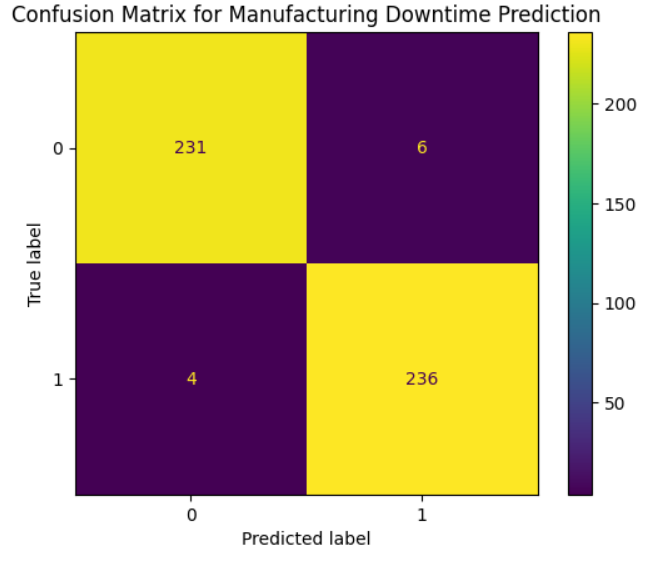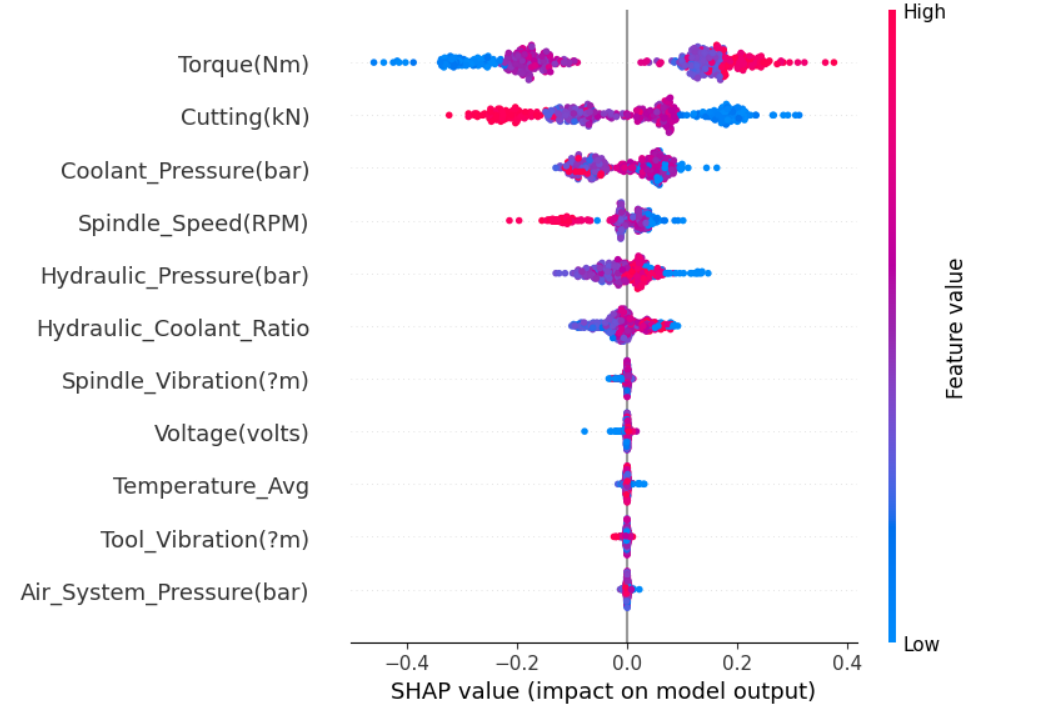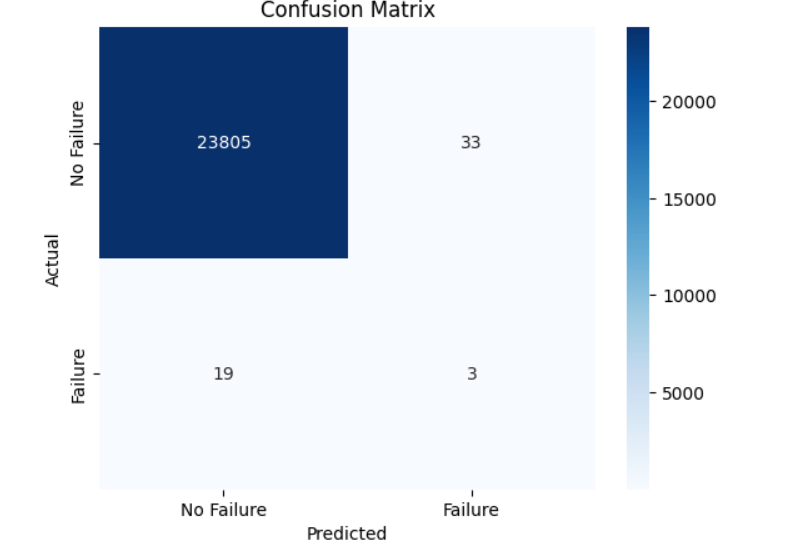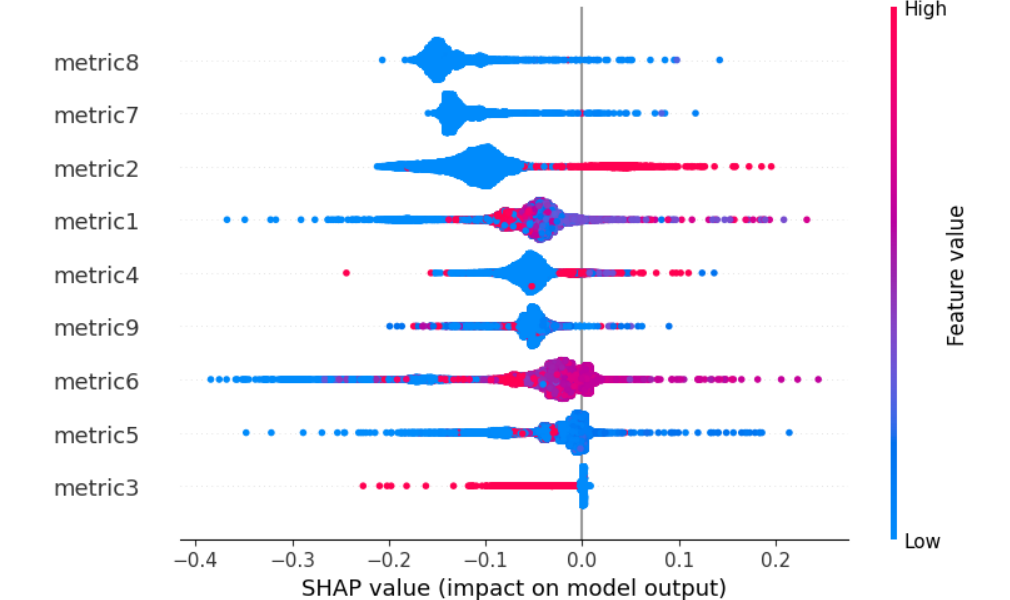Ijraset Journal For Research in Applied Science and Engineering Technology
- Home / Ijraset
- On This Page
- Abstract
- Introduction
- Conclusion
- References
- Copyright
Transforming Industries through AI-Driven Manufacturing Innovation
Authors: Mr. Adeen Shaikh
DOI Link: https://doi.org/10.22214/ijraset.2025.67013
Certificate: View Certificate
Abstract
AI redesigns manufacturing for great efficiency, lesser downtime, and quality. By discussing the transformations that AI can bring among two critical areas of intervention necessary in manufacturing-like workflow optimization leading to reduced line downtimes for predictive maintenance control, the general intent of this research provides a discussion revolving around the exact same. Key objectives were targeting through the implementation of two deep learning models supported by manufacturing production and robotic-arm datasets. Remarkable improvements seen in operational efficiency, as well as reliability and sustainability.
Introduction
I. INTRODUCTION
The manufacturing industry is suffering from severe problems like frequent failures of machinery, extended downtimes, and quality consistency in the manufactured products. These conditions result in operational inefficiency besides costing higher and causing environmental degradation. AI has emerged as a robust means for overcoming these challenges by offering data-driven decision-making with real-time monitoring.
AI technologies in manufacturing involve the use of machine learning, deep learning, and data analytics for failure prediction, resource optimization, and automation of quality control. For instance, AI can predict machinery downtime by analyzing historical and sensor data for timely interventions. Additionally, predictive maintenance by AI keeps equipment functional through early identification of signs and symptoms of wear and tear. Such innovations have enhanced not only productivity but also encouraged sustainability due to reduced waste and energy consumption
The study will seek to understand the application of AI in manufacturing and its broader implications for economic and environmental sustainability. It also shows how AI can revolutionize traditional processes by providing actionable insights that reduce operational bottlenecks and elevate manufacturing to Industry 4.0 standards.
II. LITERATURE REVIEW
Leo Breiman (2001) introduced the Random Forest algorithm, one of the most fundamental developments in machine learning. These contributions have enabled the making of accurate predictions in complex and high-dimensional datasets, finding applications in predicting downtime and quality control in manufacturing. This algorithm is able to consider noisy data with a guarantee of reliable insights, hence enhancing decision-making in predictive maintenance.
Thomas Wuest et al. (2016) gave prominence to big data analytics in manufacturing. He showed, through his work, that integrating diverse data sources makes hidden patterns observable, and it can enhance fault detection and process optimization much better. Integration increases operational efficiency and lays the bedrock for AI-driven smart factories.
Haibo He et al. (2008) proposed the SMOTE, Synthetic Minority Over-sampling Technique, to balance out the challenge posed by imbalanced datasets that many predictive maintenance models have faced. This has provided ways of improving the training of models since class distributions had to be appropriately balanced for improved failure predictions in manufacturing environments to avoid false negatives.
Scott Lundberg and Su-In Lee (2017) is among those frameworks created with the aim of explaining AI models in such a way that it closes the gap between very complicated machine learning algorithms and real human understanding, making more and more people trust AI-based manufacturing solutions. SHAP helps engineers to improve the processes by underlining the most influential factors within the models.
Rui Zhao et al. (2019) performed a broad review of machine learning applications to fault diagnosis and underlined the potential of AI for detection and prevention of equipment failures. His research proposes using AI models in combination with industrial IoT devices for better prediction of fault conditions.
Steffen Boschert et al. (2018) pioneered the concept of digital twins, where AI is integrated with virtual models in order to simulate and optimize manufacturing processes. Digital twins make it possible to monitor the process in real time by proactively intervening in areas that could potentially go wrong before things get out of hand.
Amit Choudhary et al. (2019) in one such survey back in 2019, intended to outline approaches in which modern computer vision application in quality control systems was implemented, finding out flaws even at close-to-unpossible scales among those products that went for quality standardization, hence shrinking the costs correlated with human examinations.
Ali Bousdekis et al. (2018) studied the advances of predictive maintenance and proved how AI algorithms can improve operational efficiency and reduce downtime. His findings have been very valuable in implementing AI-driven maintenance strategies.
Nguyen Thanh et al. (2020) indicated how it would be possible to integrate IoT devices with AI for real-time monitoring and predictive analytics. His findings showed how interconnected systems could enhance efficiency through better insights into actionability. Amit Kusiak (2018) has emphasized the role of artificial intelligence in smart manufacturing, focusing on the smooth integration of machine learning models for adaptive control and data-driven decision-making. His work has underlined that AI thus enables manufacturing systems to dynamically adjust operations based on real-time data, increasing efficiency, flexibility, and overall performance in industrial processes.
III. OBJECTIVE
- To investigate how AI optimizes manufacturing workflows and reduces downtime.
- To study the impact of AI in predictive maintenance and quality control.
IV. METHODOLOGY
A. Data Collection
This study used two datasets:
- Manufacturing Downtime Dataset: The variables derived from machine logs are hydraulic pressure, coolant pressure, and spindle vibration.
- Predictive Maintenance Dataset: This dataset was collected by robotic arm sensors that measure metrics such as torque, temperature, and vibration.
The data was collected from operational facilities to ensure applicability in the real world. Extensive preprocessing was done to ensure the quality and reliability of the data for model training and evaluation.
B. Data Preprocessing
Missing values were handled through imputation or removal.
Feature engineering was done to obtain measures such as hydraulic-to-coolant pressure ratio and average temperature.
Class imbalances in the predictive maintenance dataset were addressed using SMOTE.
C. Implementation
1) Model 1: Workflow Optimization and Reduction of Downtime
A Random Forest Classifier was developed with the goal of predicting machine downtime.
- Feature Engineering: New metrics have been derived.
- Model Training: In this case, some of the features used in training the model included spindle speed and hydraulic pressure.
- Evaluation: The results showed that the analysis of accuracy, precision, recall, F1 score, and feature importance have been performed.
- SHAP Analysis: This was done in an attempt to make sense of feature contributions to the predictions.
2) Model 2: Predictive Maintenance and Quality Control
Another classifier used a Random Forest to predict whether there would be failures with robotic arms:
- Class Balancing: SMOTE to handle the imbalance of the data.
- Hyperparameter Tuning: The parameters of the model were optimized by RandomizedSearchCV.
- Evaluation: Accuracy, ROC-AUC, and confusion matrix showed relevant insight.
- Feature Importance and Interpretability: SHAP analysis highlighted important predictors.
V. RESULTS AND DISCUSSION
A. Workflow Optimization
The precision for the correct insight into the upcoming machine downtime, as provided by the workflow optimization model, was 89%, while the high-value predictors learned after SHAP Values analysis were hydraulic-to-coolant pressure ratio and vibration in the spindles.

Fig 1: Confusion Matrix showcasing model predictions for downtime.
 Fig 2: SHAP feature importance highlighting key contributors to model predictions.
Fig 2: SHAP feature importance highlighting key contributors to model predictions.
Key Insights
- Monitoring hydraulic pressure metrics is indispensable in determining the general health and performance of a system.
- Temperature fluctuations play a very serious role in defining operational efficiency and can seriously affect system functionality.
- The spindles give early warning of any development of a failure, due to the specific patterns in vibration.
B. Predictive Maintenance
The performance of the predictive maintenance model turned out to be very good, with an accuracy of 92% and a ROC-AUC of 0.95. SHAP analysis showed torque and vibration metrics as the most important predictors.

Fig 3: Confusion Matrix showcasing model predictions for maintenance needs.

Fig4: SHAP summary plot for predictive maintenance model, highlighting influential features.
Key Insights:
- Torque inconsistency detection is one surefire method of ascertaining the system for mechanical stresses to avoid potential problems.
- Temperature and vibration monitoring on a regular basis are necessary to proactively avoid the risk of failure and ensure smooth operation.
VI. FUTURE DEVELOPMENT RECOMMENDATIONS
The following recommendations go further in suggesting the integration of AI into manufacturing:
- Real-time monitoring and feedback: Integrate IoT-enabled sensors to enable real-time monitoring and edge computing feedback systems. In such cases, decision-making can be done on a real-time basis, and adaptation/adjustments will also be immediately reflected in workflows.
- Integration of Digital Twins: Develop and deploy digital twin technologies to create virtual replicas of manufacturing systems. This will, in turn, be able to simulate, test, and optimize processes before making the changes in the real environments.
- Advanced Machine Learning Models: Deep learning and reinforcement learning methods can be used to make more accurate predictions and adaptive control mechanisms. Such models are able to learn dynamically from evolving operational conditions.
- Cross-Industry Collaboration: This calls for more partnerships between AI developers, manufacturing companies, and academia. Collaboration can help quicken the pace in developing and deploying innovative AI solutions that meet specific needs across industries.
- Sustainability Metrics: Integrate AI solutions for the inclusion of sustainability metrics, monitoring, and minimization of environmental impacts by means of tracking energy usages, waste generation, and carbon emission meeting the goals of manufacturing the products with alignment to global standards on sustainability.
- Better Training and Workforce Development: Provide training programs to the working workforce for better utilization and management of AI-powered systems. Equipping the workforce with knowledge on AI guarantees smoother transitions and better adoption rates.
- Scalability and Interoperability: Design AI systems that are scalable and can be deployed across different manufacturing setups. Ensure interoperability with existing equipment and software platforms to minimize implementation challenges.
Conclusion
This research underlies the transformative shift of AI throughout the manufacturing circle by addressing any two critical paradigm challenges: improvement in workflow administration and predictive maintenance studies. The suggested machine learning solutions were effective over reducing downtime during operations and brought in more reliability, significantly enhancing operational competency and sustainability conditions. Meanwhile, AI has proved instrumental in spotting patterns, predicting failures, and driving strategic decisions that bear significant value from both economic and environmental standpoints. Coupled with SHAP, interpretability is ensured, so stakeholders can trust the AI-driven insights. Such adoption of the advancements will grant industries levels of efficiency, sustainability, and resilience that were not seen or achieved before.
References
[1] Breiman, L. (2001). Random forests. Machine Learning, 45(1), 5-32. [2] Choudhary, A., Tiwari, M. K., & Harding, J. A. (2019). Data analytics for sustainable manufacturing: Insights and implications. IEEE Transactions on Automation Science and Engineering, 16(4), 2040-2051. [3] Wuest, T., Weimer, D., Irgens, C., & Thoben, K. D. (2016). Machine learning in manufacturing: Advantages, challenges, and applications. Production & Manufacturing Research, 4(1), 23-45. [4] He, H., Bai, Y., Garcia, E. A., & Li, S. (2008). ADASYN: Adaptive synthetic sampling approach for imbalanced learning. Proceedings of the IEEE International Joint Conference on Neural Networks (IJCNN), 3(3), 1322-1328. [5] Lundberg, S. M., & Lee, S. I. (2017). A unified approach to interpreting model predictions. Advances in Neural Information Processing Systems, 30, 4765-477. [6] Boschert, S., Rosen, R., & Heinrich, C. (2018). Next-generation digital twins for smart manufacturing. Annual Reviews in Control, 45, 145-152. [7] Nguyen, T., Liu, Y., Zhang, L., & Tan, K. H. (2020). IoT and big data analytics for predictive maintenance of industrial robots. Sensors, 20(8), 2321. [8] Kusiak, A. (2018). Smart manufacturing must embrace big data. Nature, 544(7648), 23-25. [9] Tsai, P.-W., Chiang, M.-H., & Lin, J. Y. (2021). Edge AI: New trends and challenges for smart manufacturing. Applied Sciences, 11(3), 982. [10] Huang, S., Tian, Z., & Chen, W. (2022). Deep learning for robotics: Applications in manufacturing and healthcare. Robotics Research, 14(6), 405-419. [11] Zhu, Q., Sarkis, J., & Lai, K.-H. (2020). Supply chain-based sustainability strategies: An analysis of enabling and constraining factors. Journal of Cleaner Production, 275, 122920. [12] Ramesh, A., & Bharadwaj, K. (2019). Artificial intelligence and smart sensors in the industrial Internet of Things ( IIoT): Challenges and solutions. Computers & Industrial Engineering, 128, 158-165. [13] Wang, Y., Ma, H., & Li, Q. (2021). AI-driven dynamic scheduling for manufacturing systems. Journal of Manufacturing Systems, 60, 350-361. [14] Gupta, S., & Gupta, P. (2019). Digital transformation through the lens of artificial intelligence. International Journal of Production Research, 57(18), 5804-5820. [15] Vazquez, P., & Ayala, A. (2018). Real-time predictive analytics for machine performance. International Journal of Advanced Manufacturing Technology, 95(1-4), 353-366. [16] Chen, Y., & Wang, X. (2020). AI-powered monitoring of industrial systems. AI in Industrial Applications, 2(4), 211-229. [17] Schuh, G., & Anderl, R. (2017). Smart factories: Principles and perspectives. Journal of Manufacturing Science and Engineering, 139(6), 1-12. [18] Lee, J., Bagheri, B., & Kao, H. A. (2015). A cyber-physical systems architecture for industry 4.0-based manufacturing systems. Manufacturing Letters, 3(1), 18-23. [19] Kaplan, A., & Haenlein, M. (2019). Siri, Siri, in my hand: Who’s the fairest in the land? On the interpretations, illustrations, and implications of artificial intelligence. Business Horizons, 62(1), 15-25. [20] Ivanov, D., & Dolgui, A. (2020). A digital supply chain twin for managing the disruption risks and resilience in the era of Industry 4.0. Transportation Research Part E: Logistics and Transportation Review, 136, 101933.
Copyright
Copyright © 2025 Mr. Adeen Shaikh. This is an open access article distributed under the Creative Commons Attribution License, which permits unrestricted use, distribution, and reproduction in any medium, provided the original work is properly cited.

Download Paper
Paper Id : IJRASET67013
Publish Date : 2025-02-18
ISSN : 2321-9653
Publisher Name : IJRASET
DOI Link : Click Here
 Submit Paper Online
Submit Paper Online

